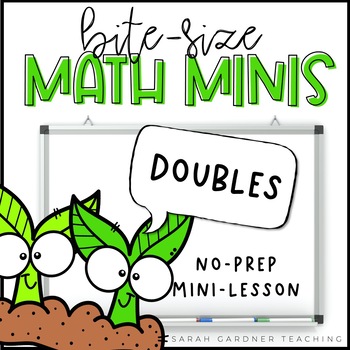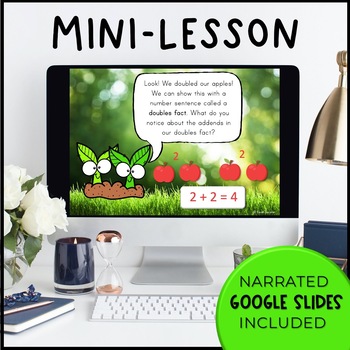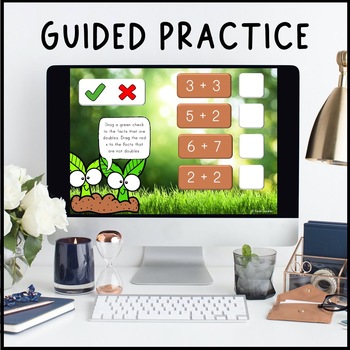Doubles | Doubles Facts | Math Mini-Lesson | Google Slides | PowerPoint
- Zip
What educators are saying
Also included in
- Your students will love these engaging mini-lessons all about addition & subtraction skills and strategies within 10, and you'll love that they are no-prep and ready to teach. Each lesson slide is meant to be projected on your whiteboard to guide short and sweet lessons about essential math concPrice $36.00Original Price $45.00Save $9.00
- Your students will love these engaging digital mini-lessons and you'll love that they are no-prep and ready to teach. Each lesson slide is meant to be projected on your whiteboard to guide short and sweet lessons about essential math concepts. Use these slides as stand-alone lessons, or as a supplemPrice $136.00Original Price $171.00Save $35.00
Description
Your students will love this engaging mini-lesson all about doubles facts and you'll love that it's no-prep and ready to teach. Each lesson slide is meant to be projected on your whiteboard to guide short and sweet lessons about essential math concepts. Use these slides as a stand-alone lesson, or as a supplement to your existing math curriculum.
Lesson Formats Included:
⭐ Powerpoint
⭐ Google Slides
Inside this Product is...
30 no-prep slides that include:
- Lesson Slides
- Games
- Guided Practice
- Word Problems
Topics Covered in this "Bite":
- What is a doubles fact?
- Sorting doubles facts
- Practice solving doubles facts
- How can we use doubles facts to help us subtract?
- Doubles word problems
Editable template slides are also included so you can tailor your discussions to fit your students' needs!
Bite-Size Math is also perfect for distance learning or remote learning. A narrated Google Slides version of this file has been included, so even the youngest students can learn independently.
Sometimes, links are moved or removed. If you ever come across a broken link, don't hesitate to reach out to me at abcswithmrsg@gmail.com and I will update it ASAP!
New to Bite-Size Lessons? Check out these freebies!
Bite-Size Character Ed - Growth Mindset







